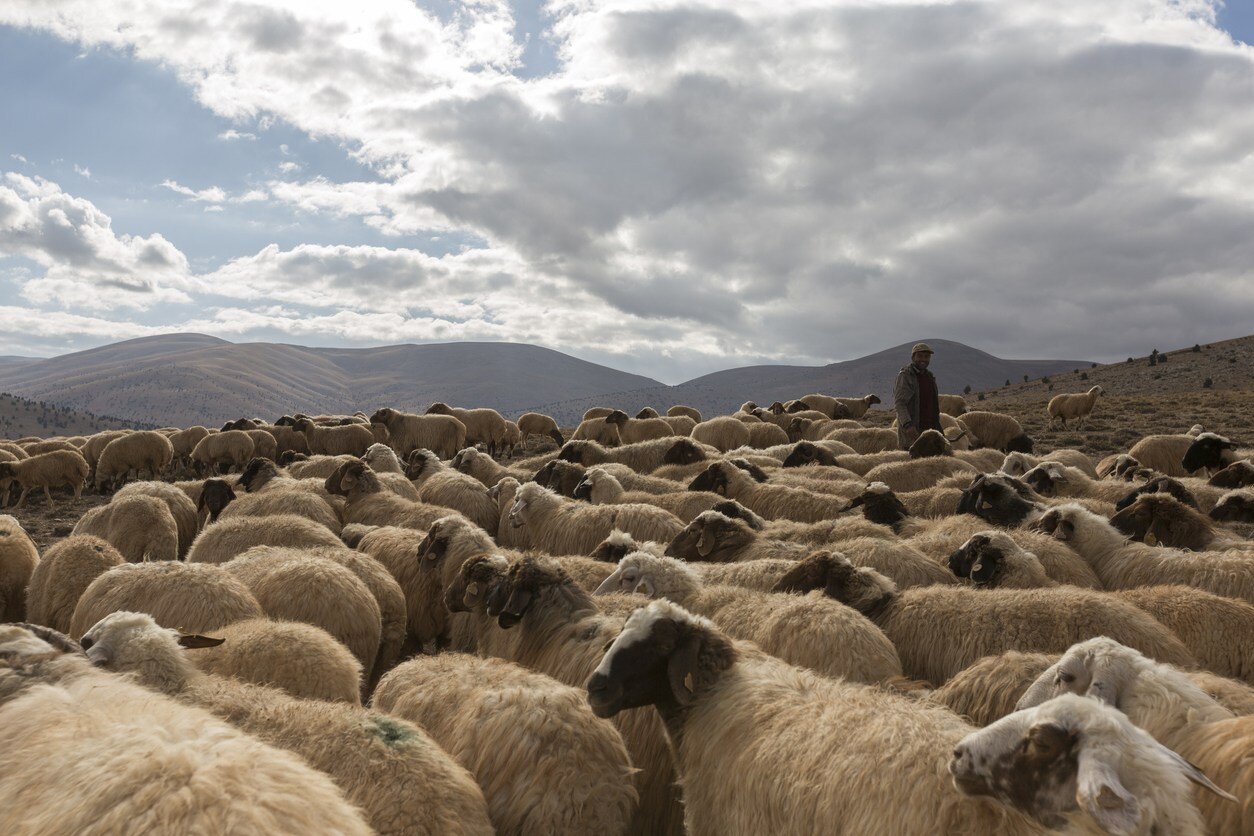Court Decision Against Peruvian Shepherds Sets Dangerous Precedent for U.S. Workers
by Claire Kelloway for Open Markets' Food & Power
In 2015, a group of Peruvian shepherds working for sheep ranchers in the western U.S. filed an antitrust suit alleging that the ranchers had colluded to hold down wages and avoid competing for labor. A judge initially dismissed the case and a three-judge panel on the Tenth Circuit agreed this July. On Tuesday, the plaintiffs petitioned for another chance at their day in court. (The Open Markets Institute plans to file an amicus brief in support of their petition.)
The Tenth Circuit Court of Appeal’s recent decision sets a precedent that, if adopted by other courts, could legalize cartel activity across the entire economy against both workers and consumers. This case also sheds light on appalling working conditions in an industry that The New York Times called “the bottom rung of migrant labor.”
Open-range shepherding is dangerous, demanding, and isolating work in harsh elements. Most shepherds in the U.S. are foreign guest workers hired on H-2A visas, a program designed to address seasonal domestic labor shortages. Shepherd guest workers are often housed in shanty campers and tents on ranches without basic amenities or permission to leave or have visitors. One survey of Colorado shepherds from 2010 found that over 70 percent did not have a single day off nor access to a functioning toilet.
Shepherds are on call at all hours to protect the herds and assist in birthing lambs. Nearly three-fourths of Colorado shepherds reported actively working over 71 hours a week, with 35 percent reporting over 91 hours. That’s 13 hours a day for seven days a week.
Today the average H-2A shepherd receives just under $1,700 a month, and when the plaintiffs filed their case, some shepherds were receiving $4.50 an hour. Shepherds often lose a sizable portion of these meager earnings to pay off debts for illegal recruiting fees and charges for essential supplies that ranchers are technically supposed to provide.
Plaintiffs allege that sheep and goat ranchers colluded to maintain low wages and poor working conditions through two associations, the Western Range Association (WRA) and Mountain Plains Agricultural Service (MPAS), which recruited and hired 91 percent of all open-range shepherds in the US during the 2013-2014 season, all of them H-2A guest workers. The associations offered the same lowest possible legal wage for all openings in a state. As such, ranches avoided competing with one another to secure labor and deprived foreign and domestic workers of the opportunity to obtain a higher wage.
Such labor recruitment associations are not unique to sheep ranching. Farmers often use third-party recruiters to hire guest workers and this isn’t the first time they’ve been accused of setting wages or employment terms across an industry. Twenty years ago, the Farmworker Justice fund called on the Department of Justice to end similar guest worker-employer cartels of tobacco farms.
In the case of shepherds, federal policy reinforces a distorted labor market. The H-2A program is meant to be a program of last resort for seasonal labor shortages. To avoid shutting out domestic workers or depressing local wages, the Department of Labor calculates a minimum H-2A wage for each industry and region called the Adverse Effect Wage Rate (AEWR). The AEWR is based, in part, on prevailing domestic wages in a given industry and region.
But according to Farmworker Justice, the powerful ranching lobby has been able to secure special AEWR carve-outs that allow ranches to offer exceptionally low and monthly H-2A wages that no domestic worker would accept. Before a 2015 rulemaking, the AEWR for open-range shepherds had not effectively increased for twenty years.
If ranches had to actually compete for workers, the prevailing industry wage and thus the AEWR would go up. Plaintiffs point to more competitive labor markets, like North Dakota, in which ranchers did not hire labor through special associations and offered shepherds $10 to $12 per hour in 2007.
Plaintiffs allege that the WRA and MPAS helped to shield ranchers from upward wage pressure by holding down wages at the legally allowed minimum across the industry. This, in turn, informed the shepherding AEWR and created a mutually reinforcing cycle of depressed wages.
Even though the plaintiffs established that ranchers delegated collective wage setting authority to the WRA and MPAS, the Tenth Circuit dismissed the case. The court reasoned that, without evidence of a backroom deal or an agreed-upon conspiracy, the ranchers’ joint wage-setting through the associations does not violate antitrust law.
This decision could set a dangerous precedent with implications well beyond food chain workers. Essentially, any group of competitors could create an association to set their wages, rates, or prices and argue that they did not illegally conspire with each other.
“The Tenth Circuit’s decision legalizes collusion done through an association of competitors. If allowed to stand, it would encourage cartel activity against both workers and consumers,” says Sandeep Vaheesan, Legal Director at Open Markets. In its amicus brief, Open Markets will emphasize this threat and urge the court to rehear the case.


